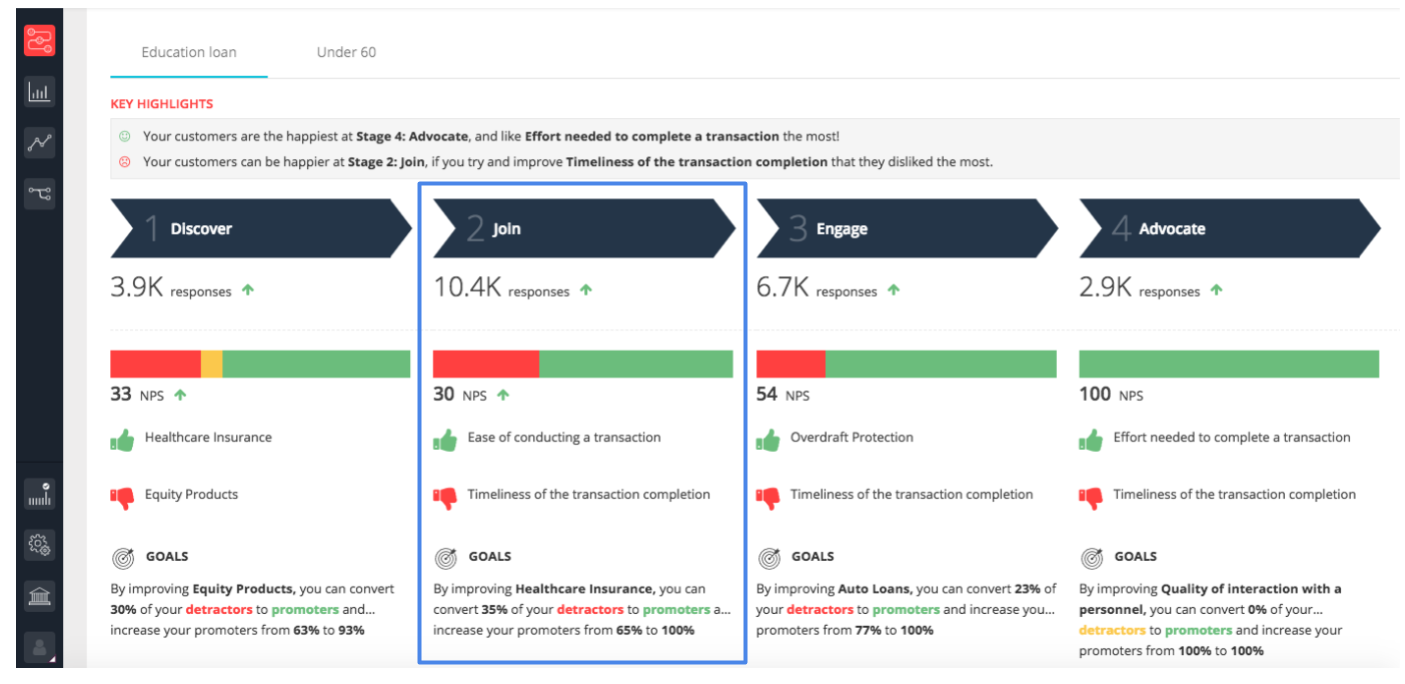Customer Journeys
Customer expectations are higher than ever. In a world where convenience is everything, companies need to work harder than ever to meet and exceed their customer’s expectations.
But the methods we’re using to manage the customer experience are stuck in the past. We’re still surveying customers the same way we were in the 90s, still battling siloed data and processes, and still relying on guesswork or bureaucratic reports to choose potential initiatives. This leaves companies failing to deliver what customers actually want.

Making a customer excited to use your product is relatively easy to achieve, with all of the marketing tools that exist today. But setting ambitious expectations will often be disastrous if you can’t meet them. Since it’s easier than ever to access competitors online, customers can quickly find another promising solution to their needs and leave your company in the dust.
This is the importance of delivering an end-to-end customer experience: there is a fine line between what a customer expects from your company and the actual experience they receive throughout the customer journey, with all its ups and downs. Understanding how to influence your customers’ expectations as well as delivering on the overall experience with your product can help retain customers and turn them from one-time customers into loyal ambassadors.
Moving customer experience into the future requires a whole new outlook on how we manage CX. While there are many approaches, we believe that modern organizations must use the three pillars of customer experience to provide best-in-class experiences.
Measuring Customer Experience Across the Customer Journey
In order to manage the customer experience, you need to understand, measure and improve on it. Building a customer journey map provides an understanding of the current customer experience your brand provides and sets the stage for identifying areas for improvement. Since there is no magical moment that defines the whole experience with a brand, brands must look at customer experience as a sum of interactions and understand that customers’ loyalty is a direct result of all of these interactions combined.
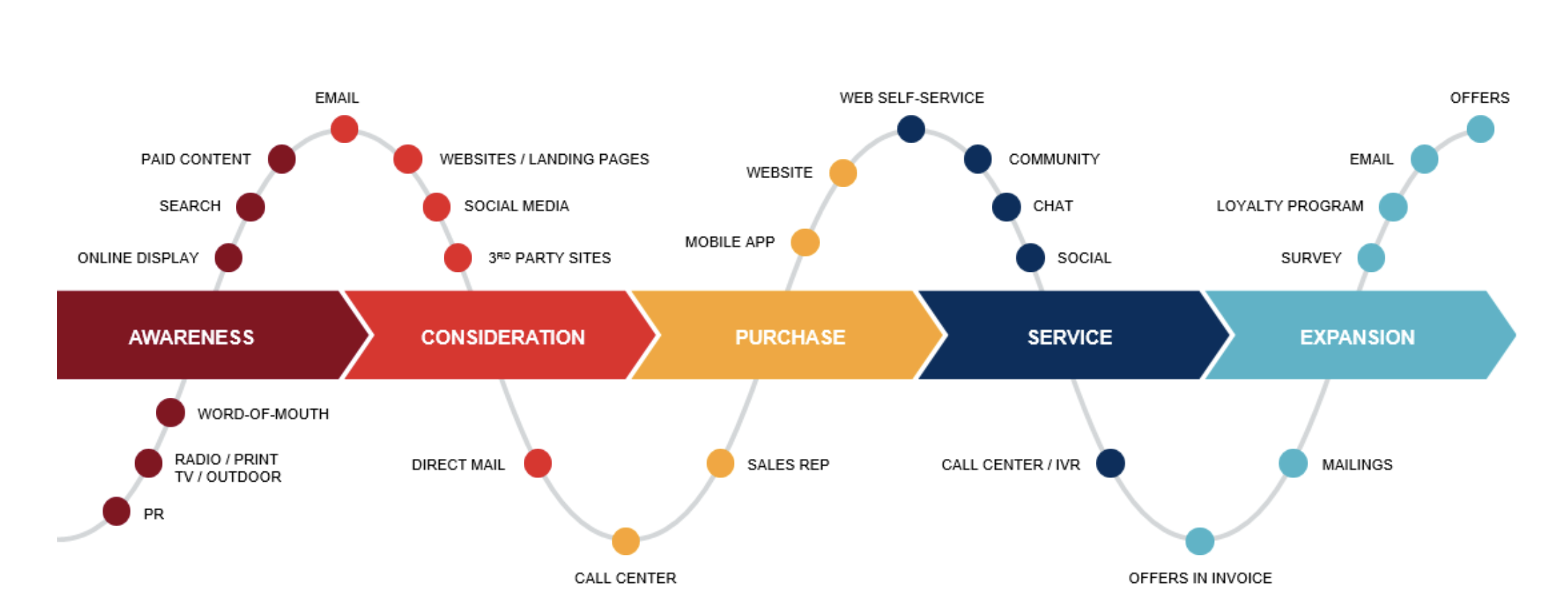
In order for the customer journey to have a real impact within your organization, it should include the entirety of the customer’s lifetime, should be applicable to the existing state of the customer experience (don’t include your future aspirations!) and should cover all of the interactions customers have with you, from the first Google ad they clicked to the cancellation request email they sent to support.
This customer journey map must be inter-departmental rather than the responsibility of only one department. The sole purpose of its existence is to explain the 360-degree view of the customer experience and provide insight into existing flow between the departments and possibly even to help identify the bottlenecks that drag the experience down. Because of this, stakeholders from every department should be involved with designing the customer journey map. Even traditionally non-customer facing departments like HR can offer insight into the employee experience.
Some of the key benefits of customer journey mapping are:
- Developing a better understanding of customers and their needs
- Identifying gaps in experience of customers at various touchpoints
- Identifying operational inefficiencies and works towards fixing them
- Encouraging cross-departmental co-ordination to improve customer experience
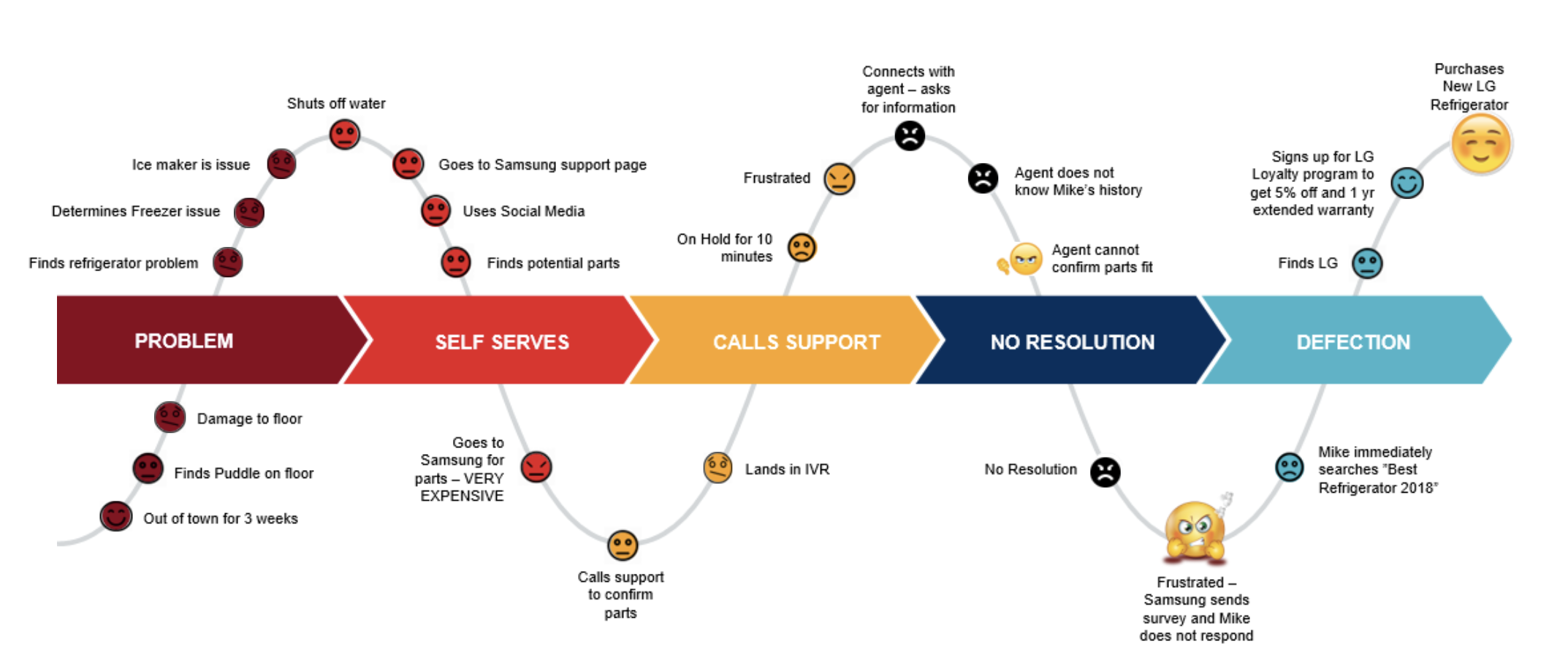
Webex Experience Management pioneered an in-product journey-based approach to Customer Experience Management. And it reflects in our CX design process where we begin by defining user journeys and mapping them with the touchpoints customers are interacting with.
Walkthrough
Journeys can be opened by clicking on Design button on the left hand side menu.
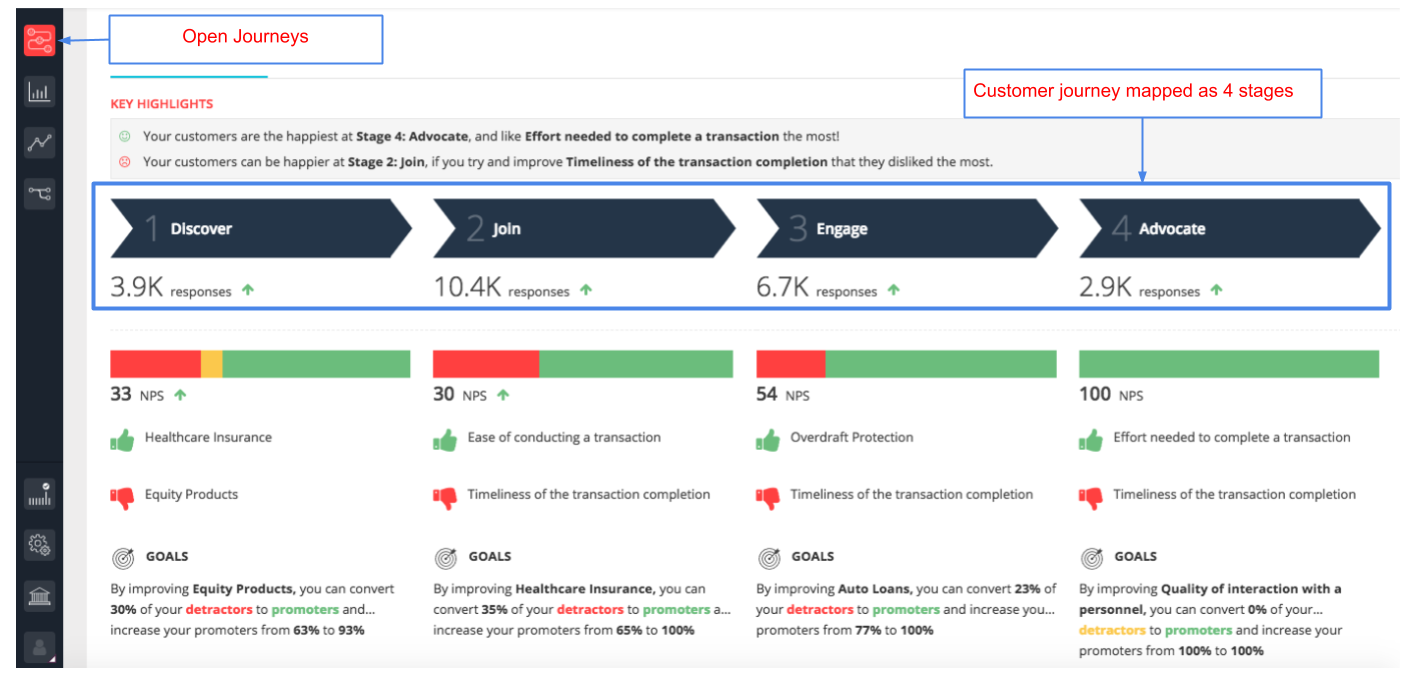
A journey is composed of several stages. As seen in the example above, a journey has been mapped in 4 stages, namely discover, join, engage and advocate. Each stage has its set of touchpoints and channels via which responses are collected. We can see a number of responses collected at each stages of the journey.
Understanding the visualization of journeys
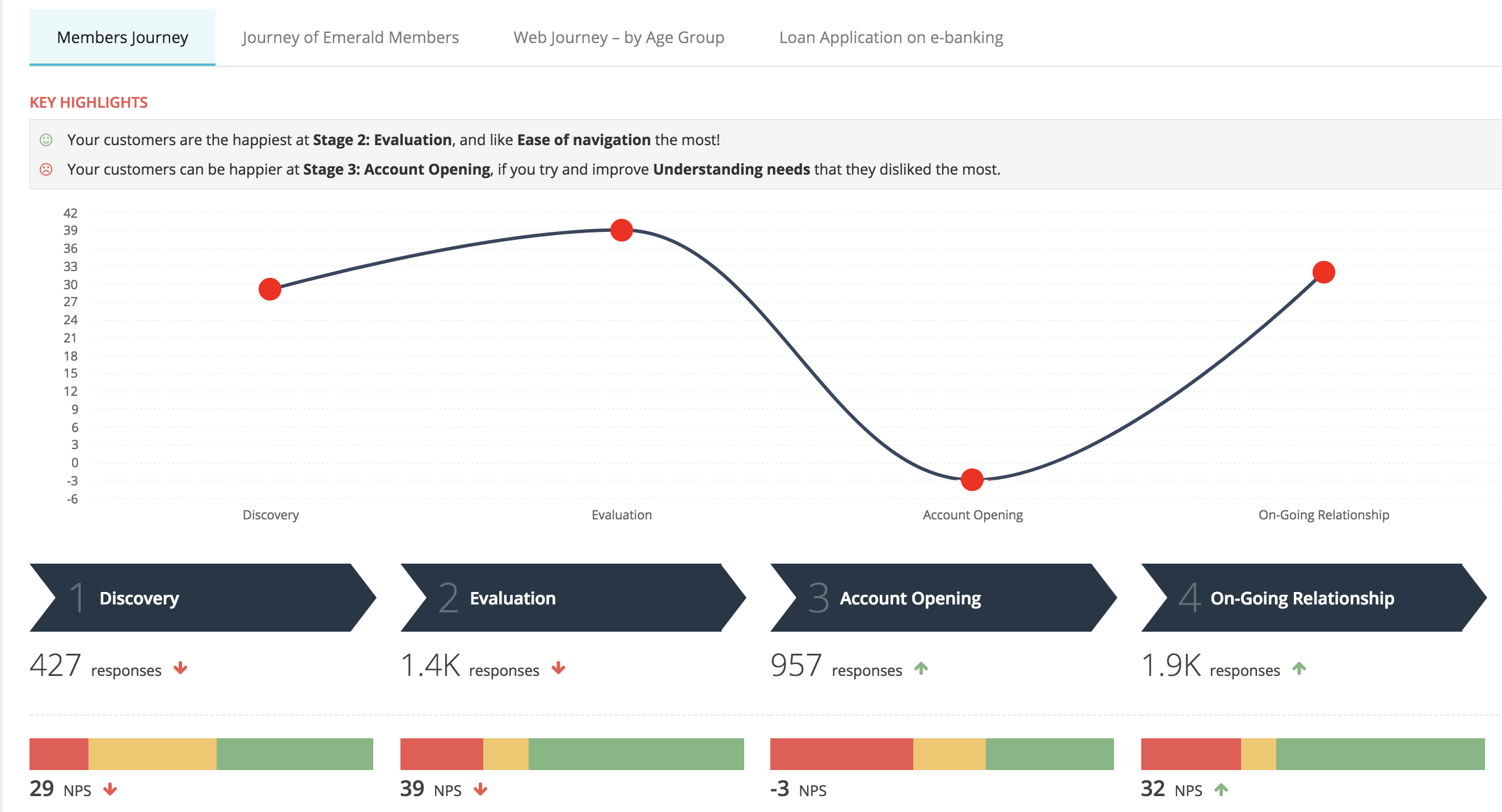
The curve plotted helps you quickly visualize the high points and low points of the journey of your customers. In this journey, Account Opening is the stage where customers are the most unhappy.
Macro and Micro Journeys
Brands often have different journeys for different product or service groups. We can even create micro journeys which span a part of the entire journey. For example, to understand the users journey on a website, a micro journey could be configured.
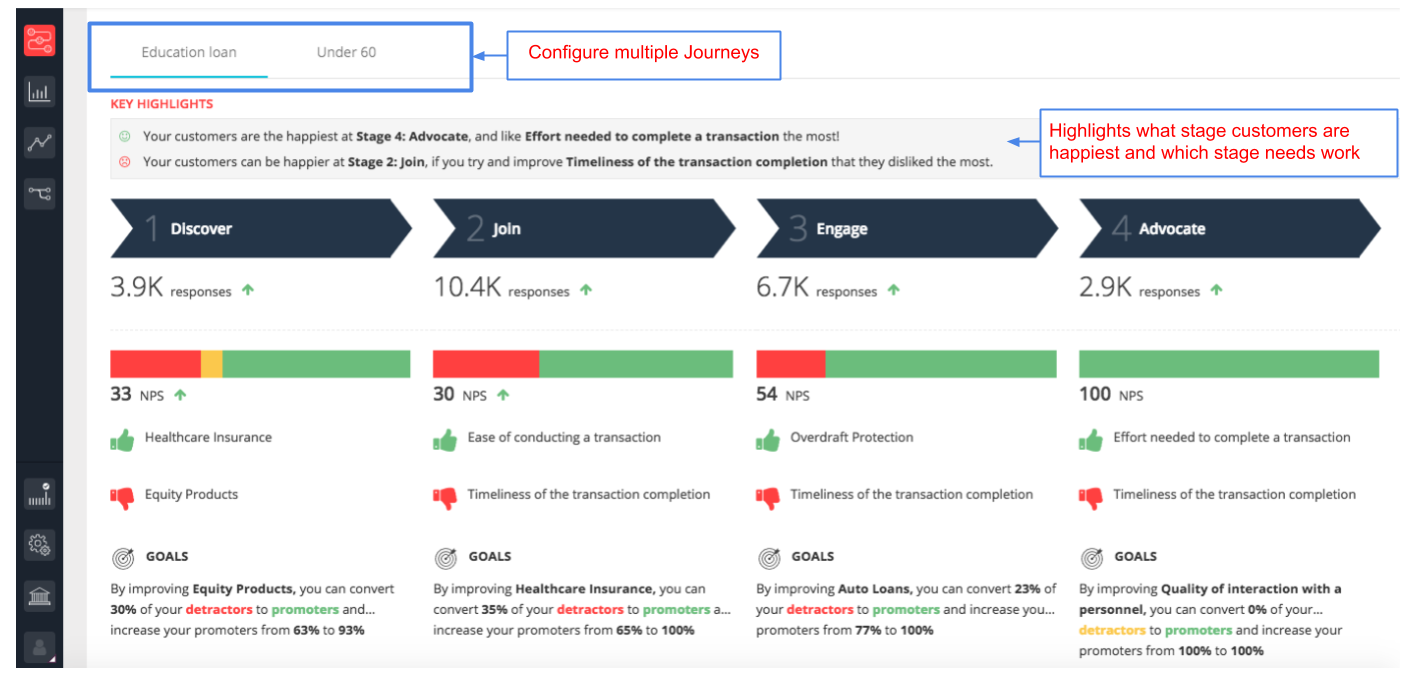
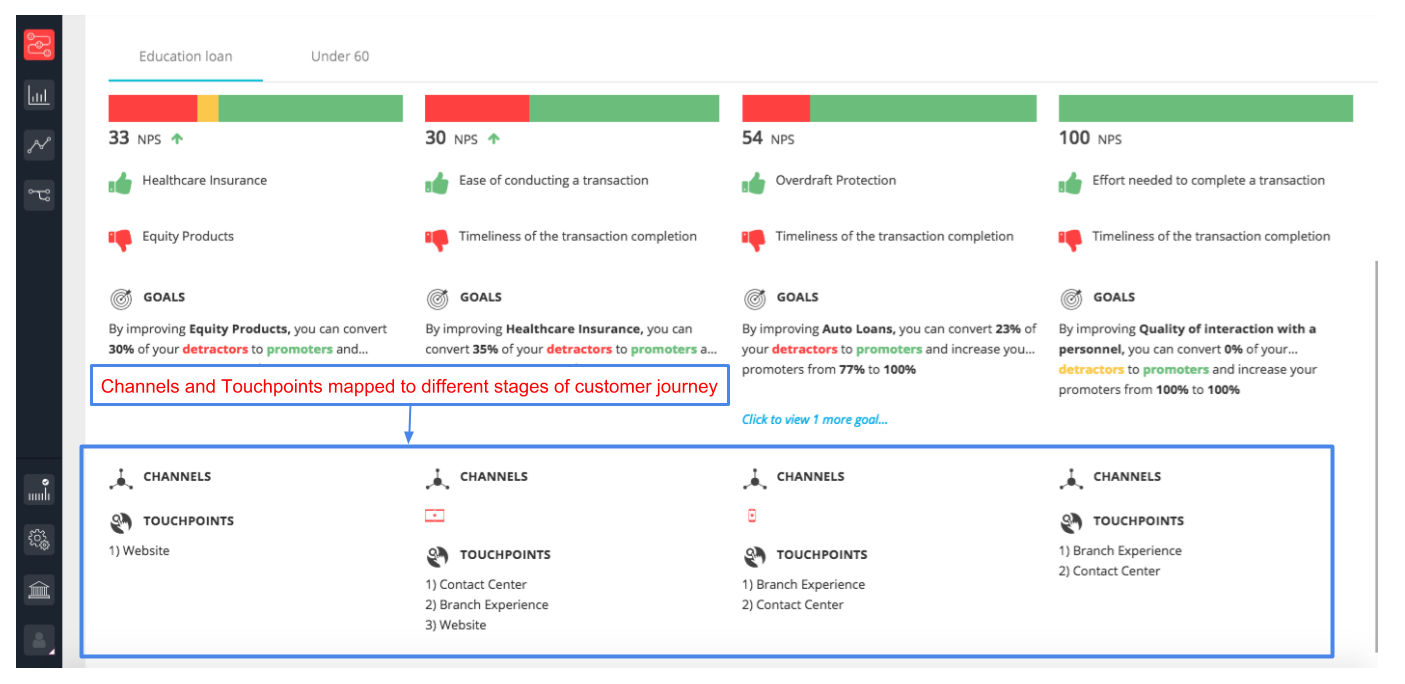
Journeys help us look at actionable insights split by stages. This enables us to probe into specific parts of a customer journey, tie it to touchpoints and channels, and understand customer experiences. This may help discover gaps in customer experiences, operational inefficiencies, etc…
Some of the insights available are
Key Highlights – These highlight at which stage customers are happiest and the stage that requires attention. It also highlights what customers liked and disliked the most.
Responses – This is the total count of responses that are collected. A trend indicator is also available.
NPS – A stage-wise NPS score. This allows us to investigate specific touchpoints to pinpoint the ‘why’ of the score.
Liked & Disliked - This indicates what has been most liked and disliked at different stages of the customer journey. This can be used to invite quick calls to action.
Goals – Goals take actionable insights further by suggesting what needs to be worked on to drive NPS scores up and by how much.
